Spotlight on Scott Strazzante
Oct 13, 2015
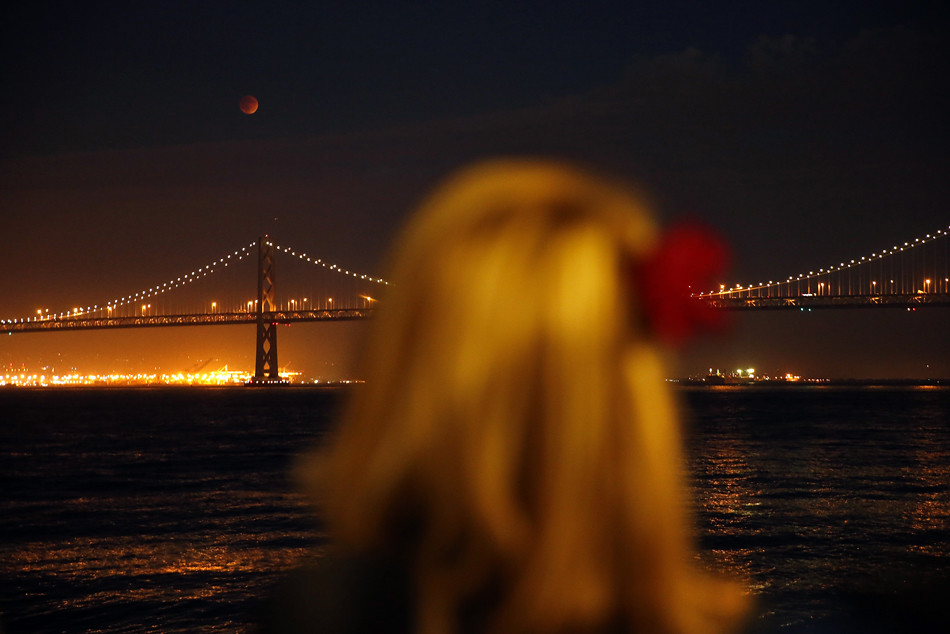
TID:
Thanks for being open to this, Scott. On a personal note, I’ve long valued our friendship and what you bring to the photo community at large is incredible. You have the respect of so many people, and we’re grateful you’ve given some time to us. Can you tell us a little of the backstory?
SCOTT:
Ross, thanks for inviting me, once again, to be part of this fabulous archive of photo wisdom that you are accumulating. Since, the world of photojournalism has given me so much and has provided me entree to amazing places, events and people, I am thrilled when I get a chance to pay back part of my debt of gratitude.
I, also, appreciate the chance to talk about this photo and assignment. You see, this shoot was both a success and a failure and sitting back and thinking about some of the choices I made that evening is very valuable to me as I try to continue my evolution as a visual journalist. Throughout my photo career, I have always struggled photographing eclipses. I am not a super technical photographer and I always aim to incorporate the human element into my images, so, a bright object in the sky at night doesn't quite mesh with my skill set and photo-making objective.
I tried to do a multiple exposure of a Winter eclipse of the moon in a suburban Chicago farm field years ago and all I accomplished was getting frost bite. However, my San Francisco Chronicle assignment to photograph the Super Moon/Blood Moon eclipse on September 27th was right up my alley. I was sent to Pier 15 in SF where a couple of astronomers were going to gather to watch the lunar event with hundreds of interested Bay Area residents. In my mind, my goal was to not come back with a super tight shot of the moon, but a more contextual image of the evening. Also, since the moon would be eclipsed and have a dark reddish hue to it, the usual exposure issues that come along with a bright moon would be non-existent.
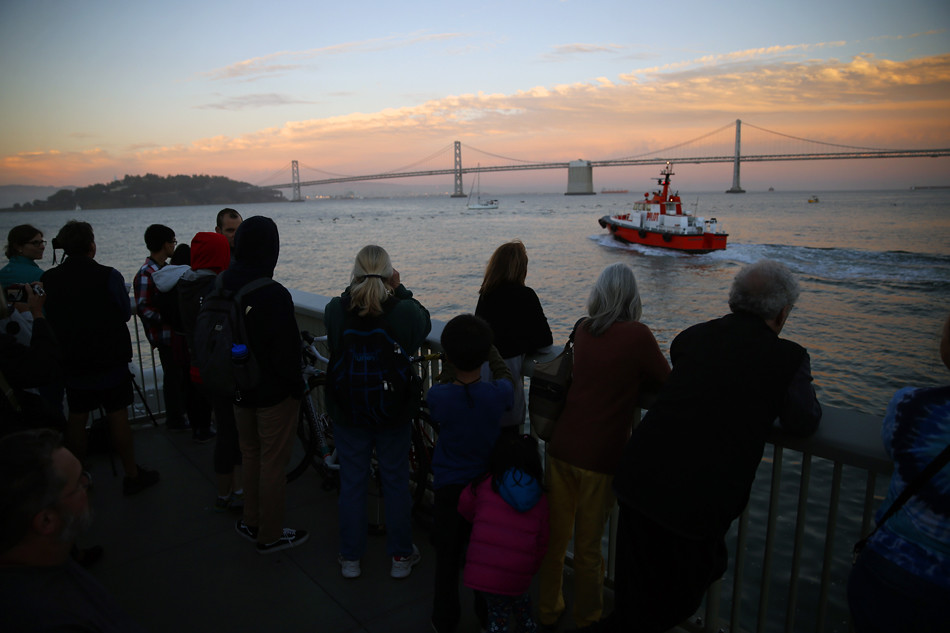
TID:
Scott, you’ve had a long and distinguished career. Before we dive into the moment, can you talk about how your mental approach to your work? I’m also curious about how you find such consistency over the years.
SCOTT:
I will try to not turn the answer to this question into a self-therapy session, but that will be fairly difficult.
I was the youngest of three children and by time I neared my pre-teen years, my parents were fairly exhausted from raising my older sisters. I had a safe and happy childhood, but my folks didn’t really pay a ton of attention to my daily activities. I was low maintenance and easy-going, so, there was really no reason for them to take time out of their busy schedules to tend to me. This parental strategy kept me on the straight and narrow because I really had nothing to rebel against, but it did set me up to be a pleaser and someone who sought out attention later in life.
When people first started giving me praise for my photography, I loved it and it made me work even harder to continue to receive that positive reinforcement. That love of attention still continues today. So, even though I wish I was totally motivated by something valiant, like trying to improve the human condition, a lot of my drive to continue to produce at a high level and to stay relevant throughout the decades is fueled by the likes, favorites, retweets and awards. I rationalize it all by saying that my flaws benefit society and the photographic community. So, instead of spending a ton of money on a therapist, I think I will just stick with that premise for now.
On a daily basis, my goal is to make unique images that work with the story, but, also, can stand alone, if need be. I have very high standards for my work and I want every photo that I share or turn in for a story to be interesting and dynamic. However, having such high standards is, sometimes, a curse. On days when I am not quite as motivated as others and am given a non-visual assignment, I have to keep reminding myself that the assignment is a job and not just my personal photo playground.
But, when it comes down to it, I just plain love my job! I am still as excited to be a photojournalist today, as I was my first day on the job.
TID:
I’m also curious how your use of language (both verbal, non-verbal and body language) impacts how you approach the people you photograph.
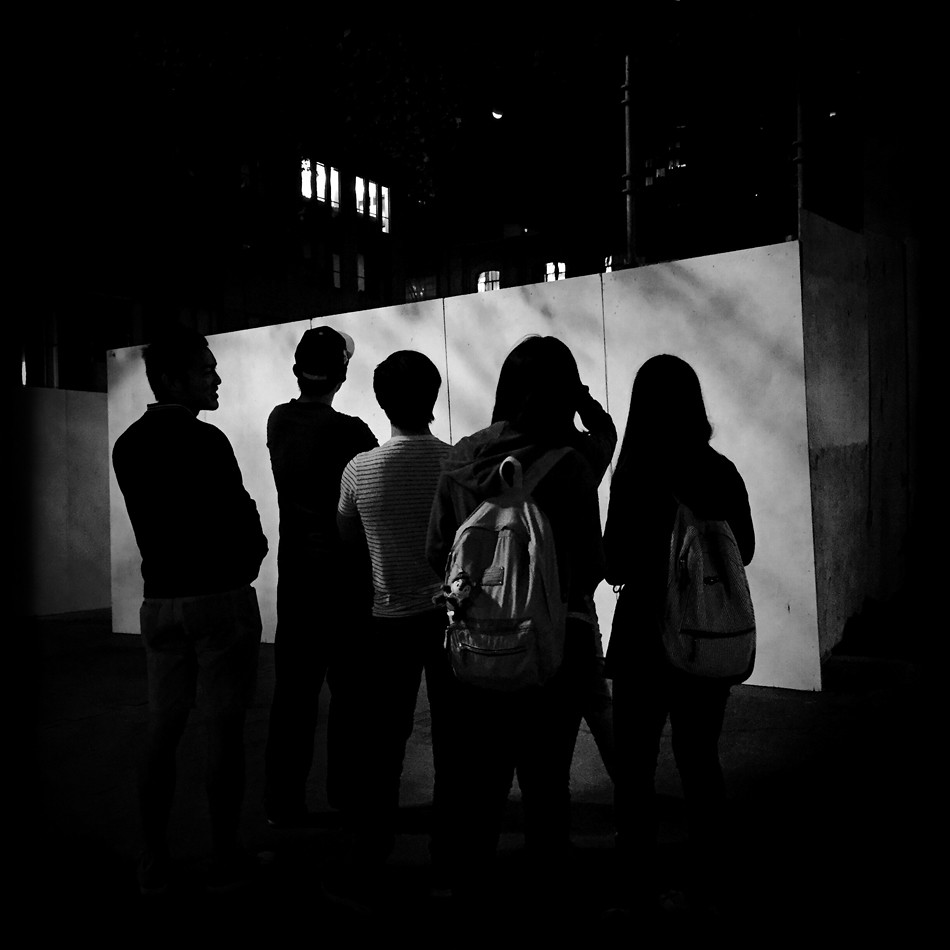
SCOTT:
My photographic approach is vastly different depending on the circumstances of the assignment.
In the case of starting a long-term project, I, always, try to first talk to my photo subjects from a non-threatening position. I have found the best approach is when I am sitting on the floor. I prefer to let the subject do most of the conversing while maintaining eye contact and making sure they know that I am interested in what they are saying.
If applicable, I will share a personal story that relates to what they are sharing. If something real is occurring, I like to begin documenting, as soon as possible, to let them get comfortable in front of my camera. Some people act natural while being photographed, however, others never seem to get used to it. At this point in my career, I have a pretty good sixth sense on who is going to be a good photo subject. After the initial meeting, I try to visit as many times as possible, even if it is just for a short period of time.
I would much rather make 8 one hour visits then 1 eight-hour shoot. While shooting, I am not a fly on the wall. I sometimes am having a conversation with people while documenting them, but then I stop yakking and get to work when I see a moment developing. Obviously, every story is different and it is important for me to be flexible in my approach. Daily assignments take another mix of approaches. I relate to people differently, whether I am photographing a person who has just suffered a loss or are celebrating or are being profiled for a certain skill or accomplishment.
I try to figure out what people need and adjust my interaction to fit that. However, no matter what the situation, I always try to remember that I don’t have the right to do anything. The photo subject is in charge. When I don’t have permission, whether verbal or non-verbal, to photograph, I feel uncomfortable and don’t do my best work. On the flip side, when someone gives me the ok, I take full advantage of the access. Sports photography and some news events are completely different animals. Access is sometimes controlled by someone other than the photo subject and that usually makes things much more difficult.
If I get a chance to have a conversation to explain to the access gatekeeper what I am trying to accomplish, I find that I am successful more often than not. However, it seems that it just easier nowadays for people to just say no than risk something going wrong. If I am shooting an event, I try to be as invisible as possible. I shoot from a low angle and try to not to make myself too obvious. However, if something amazing is happening, I will do the best that I can to get myself into the prime spot. I, usually, start on the edges and creep closer over time.
In almost all cases, I have to be very much like a used car salesman. I am trying to sell my agenda to the photo subject, while explaining why it is beneficial for them to let me spend time with them. The only time I am not worrying about any of that, is when I am doing street photography. I am still trying to go unnoticed, but the entire point of the exercise is to photograph a pure view of daily life without tipping off the photo subject that they are being photographed.
My street photography approach is the complete opposite of my story approach, but I can’t see a way to accomplish my goals without being a soul stealing creep.
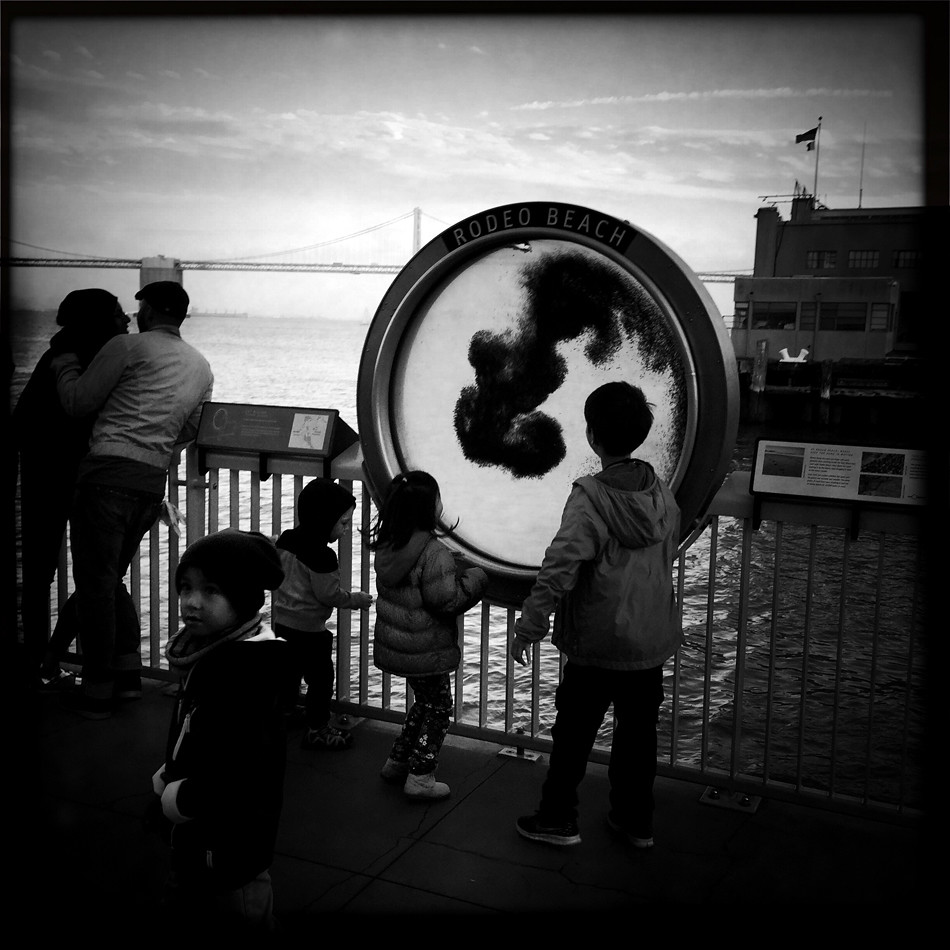
TID:
I’m always curious about what problems journalists face, and importantly - how they overcome them. What type of problems do you face as a journalist in the bay area?
SCOTT:
A major part of my job is being a problem solver. In a big city, part of that problem solving is navigating from Point A to Point B without something bad happening. Since I have only worked in Chicago and San Francisco, this is something that I have been dealing with my entire career.
However, the situation in the Bay Area recently is much worse than anything I dealt with in Chicago. There has been an epidemic of camera gear robberies here and I am constantly on guard. I try to not carry too much gear on the streets, I never open my trunk and pull out camera equipment when I get to an assignment and I try to have my head on a swivel at all times. Another strategy is that I try to avoid looking too much like a professional photographer, but sometimes that is impossible. I, also, act like I belong and keep moving.
In general, I still feel safe on a daily basis and the life of a photojournalist is still one of privilege. I am treated very well by 99.9% of the people I come across and am allowed to do many things that most people can’t do.

TID:
Now, onto the moment. Can you talk about the minutes leading up to the main frame, and what was going on in your mind at the same time?
SCOTT:
When I arrived at Pier 15 to photograph the eclipse, there were all ready a hundred people standing at the end of the pier staring out at a bank of low-lying clouds framing Treasure Island and the Bay Bridge. The moon was set to rise around 7pm with the eclipse beginning at 7:11pm, however, it was pretty obvious that the moon would not be visible until at least 7:30pm.
Realizing that my pre-visualized image of the moon rising through and over the Bay Bridge was not going to happen, I had to mentally rethink my strategy for a dynamic photo for the lead art position on A1 that was being held for the eclipse. I decided that I would quickly photograph the eclipsed moon with a 300mm lens with as much of the Bay Bridge as I could fit into the frame and then switch to a wide angle lens to incorporate the crowd into an image. The moon finally appeared over the clouds at 7:36pm. I made 90 photos with my long lens and then started walking along the end of the pier of looking for an interesting foreground element.
I quickly came across a woman with a red flower in her hair. I took 11 frames of her and didn’t really think it was anything special and moved on to try to find a better situation. I didn’t find anything else that I felt was compelling, so, feeling deadline pressure, I sat down to upload the images to my laptop and transmit them back to the awaiting editor and designer.
At that point, I thought my long lens vertical of the eclipsed moon with the bridge was my only frame that could carry the front page. When I started to edit my take, I immediately chose the best of the verticals and sent it off. I then started going through the wide stuff and the frame of the woman with the flower in her hair popped out as much better than the moon and bridge photo. I loved the color palette of the image and how the woman’s blond hair and red rose mimicked the yellow glow of the bridge and the blood red moon.
Realizing that I failed to get the woman’s name, I quickly rushed back, but by time I got back to where she was, she had left. Huge faux pas on my part. I should know better at this point in my career to get a name for all the images that I take. I sent a couple more wide photos back to the paper and then Instagrammed, Tweeted and Facebooked the “Blonde Moon” image. I can always tell when an image is successful by whether or not there is an immediate response on social media. This photo got a lot of instant love. I think one of the most underrated skills in photography is editing or self-editing, in the case of the modern photojournalist. I am constantly transmitting images on deadline, sometimes, multiple times during an assignment. Trying to find the best image on a laptop in bright sunlight or while trying to get back to shooting is a challenge.
I do a lot of chimping and try to tag the best images before I ingest my cards. Photo Mechanic brings up the tagged images first, so, I can be sending off images before my take is fully downloaded to my laptop. Most times, I realize an image is special while I am shooting it, but sometimes, like this one, I find it while editing. Luckily, in this case, I only had to go through 289 photos to find the best one, but for other shoots, I am shooting thousands of photos in a short period of time and I need to have some editing shortcuts in place. By this time the moon was far above the bridge and I was pretty sure that I had made the best image that I could. I packed up my gear and headed out.
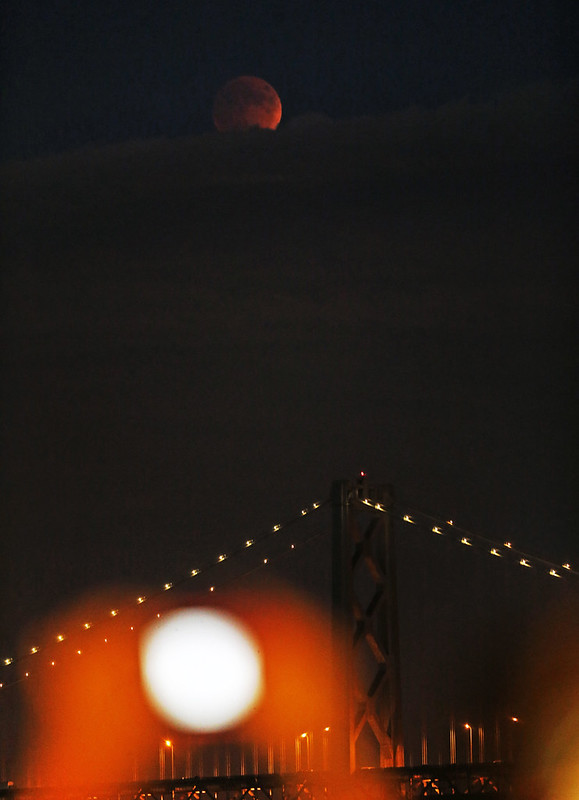
On the way back to my car, I made a black and white Hipstamatic photo of a group of people stopping on Market Street to gawk at the eclipse. I Instagrammed that image on my personal IG feed and headed home. Earlier I had mentioned how this assignment was both a success and a failure. The success was the image that ran as lead art, one of my favorites of 2015, but, my failure, besides, not getting the name of the woman, was that I didn’t offer the paper a different enough option for a secondary image. In hindsight, I should have dragged along a 600mm lens and spent 5 minutes photographing some nice tight shots of the eclipse.
It probably would have helped, too, if I had worked the situation a bit harder after I transmitted by initial batch. One of my struggles over the years is that I try to make every image capable of carrying a page and I, sometimes, fail to think of the poor designer back at the office trying to make an interesting page out of a handful of wide horizontals.
Oh, well. Live and learn.
TID:
I often ask this, but I’m curious how your career has impacted you over time. How have you changed?
SCOTT:
As a person, I don’t think I have changed very much except that I am smarter and more efficient. Throughout the first decade of my career (1986-1996), I was just your typical run of the mill photojournalist. I won an award here and there, but mostly I was learning my craft by making mistakes.
Over the next five years, especially when I got to the Herald News in Joliet and started working with Mike Davis, Brian and Kathy Plonka, Rob Finch, Todd Heisler, John Lowenstein, Michael Hamtil and all the other young motivated visual dynamos at Copley, I started to figure things out. Then in 2001, I was named National Newspaper Photographer of the Year and it totally changed my career trajectory and how people viewed me. Pretty much overnight I went from relative photo obscurity to being a household name, a long, hard to pronounce, no, it is not Strazzanski, household name.
At photo gatherings, people would stop their conversations to listen when they heard me answering a student’s question. It was flattering but totally ridiculous. During my early years, I met a couple successful photographers who didn’t have a minute for me and then I won POY and all of sudden they kissed my butt. That turned me off.
I made a mental note of that and decided that I didn’t want one person to think that I was too full of myself to take time to chat or give their career a boost. As for my actual workflow, I have made ever mistake possible over my career, so, now I can walk into an assignment and know where the sweet spots are. However, the best photos are always something I never imagined happening, so, I try not to be too pleased with getting the expected photos. Overall, I still pinch myself that this son of a tire dealer, from the South Side of Chicago, fell into such an amazing profession. One that is never boring and is rewarding in multiple ways.
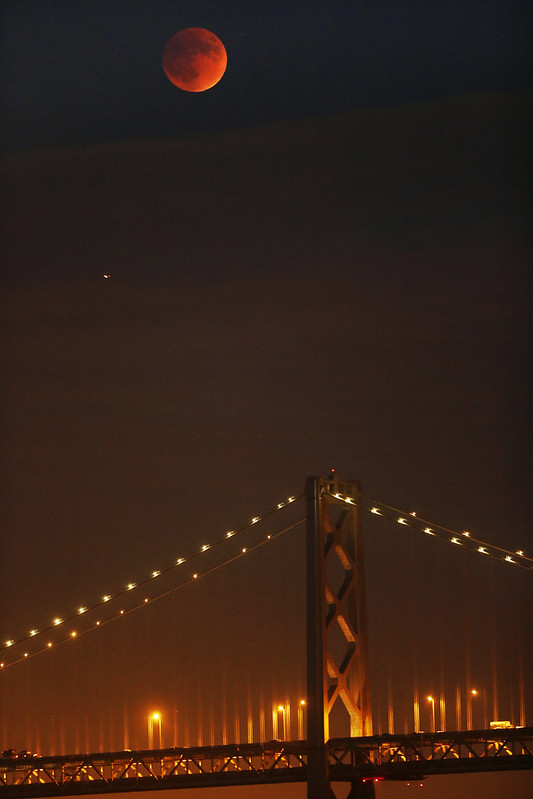
TID:
In conclusion, what advice do you have for photographers wanting to do the type of work that you do?
SCOTT:
The photojournalism landscape has seen incredible change since I first began. Back when I started, one would get a job at a small paper. If they did well, they would move on to a medium sized paper. If they continued to improve and win awards they would capture the attention of a large paper, get hired and spend the rest of their career there.
Some super successful shooters would parlay their success and go work for National Geographic or Time or a wire service. Now, I don’t think the goal of most young photographers is to even work at a newspaper. Nor can it be. The landscape has changed almost entirely because of the advent of the internet. Before the wide world web, you needed a gatekeeper at newspaper or magazine to give your work the stamp of approval before it was published. Now everyone can be their own publisher. The internet has, also, led to a decline in the profitability of newspapers and magazines. It has taken away jobs but made it easier to get noticed.
In today’s photo world, a photographer needs to be different and prove it a couple years into their career or even while still in college. I developed my vision over decades. Even though I have been a newspaper photographer for almost 30 years, I feel that I am most well known for Common Ground, my 20 plus year personal project on land use in suburban Chicago, and my iPhone street photography. If I would have just done my job and nothing more, I would not be as successful as I am.
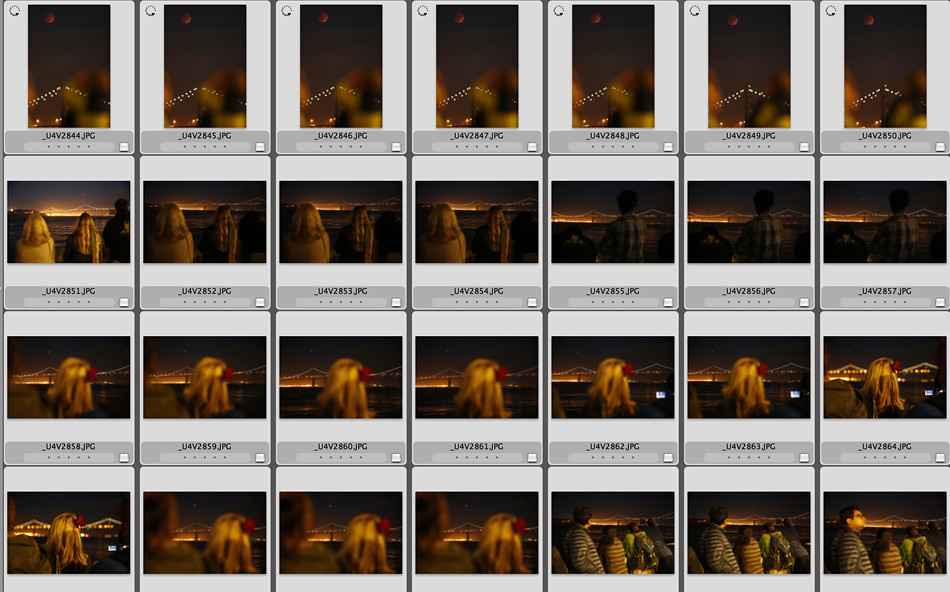
Unlike my early years, I no longer rely on the newspaper to be my publicist. I am out there everyday sharing work through social media and creating new work not only on the job, but off it, too. It is crucial for young photographers to be go-getters. Look at some of my favorite young photographers- Carolyn Van Houten, Matt Eich, Maisie Crow, Diana Markosian, Ed Ou, Stacy Kranitz, Mariska Camp and I could go on and on. They aren’t photographers because they thought it was cool. They didn’t try to copy the career of an older photographer because they thought that was the only path to success. They have worked their butts off to create bodies of work that mean something to them and not to please someone else.
They have unique visions and the world of photography has taken notice. Talent will only take you so far. One, also, needs to be skilled at marketing themselves. But, marketing in a smart way. One must find that perfect place between underexposure and being annoying. Add in being good at people skills and at networking, too. I rarely recommend photographers who I have never met, even if their work is amazing. However, if I make a connection with a nice, talented photographer at a conference or on assignment, I will be much more likely to give their career a boost, if I have the opportunity. I saw this quote on Facebook the other day-
“If it is important to you, you will find a way. If not, you’ll find an excuse.”
That pretty much sums it up.
:::BIO:::
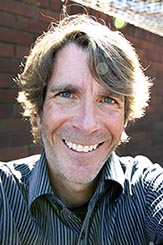
Scott Strazzante was born and raised in the shadows of the steel mills on the far southeast corner of Chicago.The son of a tire dealer, Strazzante first became interested in photography when as a teen he started taking his dad’s camera to Chicago White Sox baseball games.
Shortly after graduating from Ripon College in 1986, Strazzante started his career at The Daily Calumet. The next year, he began an 11-year run at The Daily Southtown in Tinley Park, IL.
In 1998, Strazzante moved on to the Joliet (IL) Herald News where, in 2000, he was named National Newspaper Photographer of the Year by the National Press Photographers Association and the Missouri School of Journalism. In 2014, Strazzante joined the photography staff at the San Francisco Chronicle, after spending 13 years at the Chicago Tribune.
Strazzante, an 11-time Illinois Photographer of the Year, has covered Presidential Inaugurations, the Super Bowl, two World Series and three Olympic Games, but he is more proud of his work that uncovers small but universal moments in daily life.
Strazzante was a part of the Chicago Tribune team that won a Pulitzer Prize in Investigative Reporting in 2007 for a series about faulty government regulation of dangerously defective toys, cribs and car seats.
Also, in 2007, Strazzante’s personal project “Common Ground” was honored with the POYi Community Awareness Award and 1st Place Feature video in the National Press Photographer Association’s Best of Photojournalism. The project has been featured in National Geographic, New York Times’ Lens Blog and on CBS Sunday Morning.
In 2014, after a successful Kickstarter campaign, “Common Ground” was published in book form by PSG.